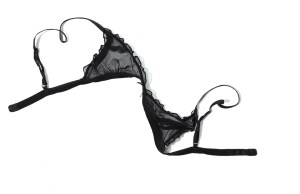

- Becoming a little preoccupied with imperfections in our physical appearance is normal. But when we start losing the ability to accept our flaws, body dysmorphic disorder can develop.
- Common signs of body dysmorphic disorder include constantly scanning one’s reflection for flaws, obsessively grooming, taking selfies, and getting excessive cosmetic surgeries.
- Factors that can trigger body dysmorphia include adverse childhood experiences such as bullying, emotional or physical abuse, or a family history of anxiety, body dysmorphia, or brain chemistry imbalances.
- A mental health evaluation from a therapist or psychiatric professional is the only way to determine if you have body dysmorphic disorder, but spotting the symptoms in your daily life can be the catalyst that signals the need for a provider’s assistance.
- The most successfully employed treatment methods for body dysmorphic disorder include cognitive behavioral therapy (CBT) and psychiatric medication, most notably SSRIs such as fluoxetine and clomipramine.
It’s the little things about our appearance that often get to us—some crooked teeth, a few extra pounds, or maybe more gray in our hair than we’d like to see. The idea of perfect, the one our imagination creates, is unrealistic. However, recognizing when our self-judgment transforms into an unhealthy obsession can be hard to spot—we’ve all agonized over our appearance for a bit too long. But for people with body dysmorphic disorder (BDD), this is exactly where the trouble begins—and may not stop.
Body dysmorphic disorder (sometimes referred to as body dysmorphia) is characterized by deep unhappiness, a near-hatred for the reflection we see in the mirror. Still, imperfections make us who we are; so for those with body dysmorphia, gradual self-acceptance and a balanced mindset are the arduous, but rewarding goals in front of them.

What Is Body Dysmorphic Disorder? How Frequent Is This Disorder?
Body dysmorphic disorder (BDD) is a mental health condition characterized by a preoccupation with perceived flaws or defects in one’s appearance, often leading to distress, anxiety, and obsessive behaviors.
Body dysmorphic disorder affects a significant portion of the population, with estimates suggesting that around 1-2% of the general population may experience BDD. However, because of underreporting and misdiagnosis, the actual numbers might be higher.
What Are the Five Signs & Symptoms of Body Dysmorphic Disorder?
As with any other mental health condition, the signs and symptoms of body dysmorphic disorder can vary between individuals. But mental health professionals most commonly spot the following in clients who are later diagnosed with body dysmorphic disorder:
- An intense dislike for one or more aspects of their physical appearance
- A constant need for validation about their appearance from others
- Obsessive tendencies related to their appearance, including spending too much time in front of the mirror, constantly grooming themselves, or taking pictures to scan for imperfections in their face or physique
- Irrational fear about being seen in public if they feel unattractive
- Excessive cosmetic surgery to try and fix perceived flaws in their body image
A noticeably detrimental effect on their professional, romantic, or social life is also nearly universal. These signs and symptoms may shift, depending on someone’s personality and individual circumstances, but the overarching element between all manifestations of body dysmorphic disorder is that they become an intrusive, unhealthy, and corrosive presence in someone’s daily life.
Want to talk to a therapist?
Start working with one of our top-rated providers. We have availability now and accept most major insurances.
What Triggers Body Dysmorphia?
Body dysmorphia triggers are often painful, deeply personal experiences that cause lasting emotional distress and (in some cases) physical pain. These triggers don’t always result in someone developing body dysmorphia, or in the long-term, though. With this in mind, body dysmorphia can be triggered by:
- Adverse childhood experiences, including verbal or physical mistreatment
- Bullying in childhood or adolescence, especially related to a physical impairment, such as a disability, birth defect, or mental health condition that affects their ability to learn
- Hypersexualized social media content that pushes unrealistic expectations for men’s and women’s bodies
- Low self-esteem, which can arise from a variety of factors
- A family history of mental health conditions, including depression, anxiety, or brain chemistry-related issues that affect mood and behavior
Body dysmorphic disorder has been associated with a couple of environmental and genetic factors: Its existence correlates with high rates of childhood abuse and its prevalence is raised in immediate relatives of those with obsessive-compulsive disorder (OCD).
Only 2.4% of people in the US (2.5% in females and 2.2% in males) suffer from the disorder, but those who do are likely to develop it around the age of 12 or 13. Individuals with the disorder insetting before age 18 are more likely to attempt suicide and suffer from major depressive disorder as well. It’s also worth noting that muscle dysmorphia occurs almost exclusively in males, for reasons likely related to unrealistic expectations for men’s bodies in popular media.
How Do I Know If I Have Body Dysmorphia?
An important consideration to keep in mind before worrying about whether you have body dysmorphia is that, like any other condition, you can experience symptoms briefly without developing a mental health condition in the long term. You’ll only truly know if you have body dysmorphia if you’ve been diagnosed with body dysmorphic disorder by a mental health professional.
A mental health evaluation, questionnaire, and possibly input from loved ones and relatives within your household will help your provider determine whether you meet the necessary criteria for body dysmorphic disorder.
How Is Body Dysmorphic Disorder Diagnosed?
According to the Diagnostic Criteria for body dysmorphic disorder from the DSM-5 300.7 (F45.22), an individual must meet these criteriums to be diagnosed with body dysmorphic disorder:
- The individual obsesses over one or more perceived flaws in his or her physical appearance that are not visible or a big deal to others.
- At some point, the individual has performed recurrent behaviors like frequently looking in the mirror, excessively grooming, or comparing his or her body image to another’s.
- This obsession causes clinically significant distress or impairment in his or her social or work life.
- The individual’s preoccupation with his or her appearance cannot be explained by concerns with body fat or weight, which may be symptomatic of an eating disorder.
Even if a diagnosis can only come from a qualified mental health professional, spotting the signs and symptoms is still important, and can help determine whether your body image issues or concerns are evolving into body dysmorphic disorder.
Is Body Dysmorphic Disorder a Serious Mental Illness?
Body dysmorphic disorder can be a serious mental illness if left untreated. Men and women who develop body dysmorphic disorder are also vulnerable to developing other disorders, including:
- OCD
- Eating disorders
- Depressive and anxiety disorders
Coping with body dysmorphic disorder is best achieved with the assistance of a mental health professional who understands and has a background in treating image-related conditions with therapeutic solutions and/or psychiatric medications.
What is an example of Body Dysmorphic Disorder?
An example of BDD could be someone who becomes excessively fixated on a minor flaw, such as a perceived imperfection in their skin, nose, or any other part of their body. They might spend excessive time checking the perceived flaw in mirrors, seeking reassurance, or taking extreme measures to hide or fix it, even if others don’t notice it or see it as insignificant.
What is the main cause of body dysmorphia?
The main cause of body dysmorphia is complex and not entirely understood. It’s believed to be a combination of genetic, psychological, environmental, and sociocultural factors. Neurobiological differences, life experiences, and societal pressures on appearance can all contribute to the development of BDD.
I have BDD, body dysmorphic disorder, is there anything I can do that can help?
There are treatments available that can help manage BDD. Cognitive-behavioral therapy (CBT) has shown effectiveness in helping individuals challenge and change negative thought patterns about their appearance. Medication and support groups can also be part of a comprehensive treatment plan.
What are the two types of body dysmorphia?
There are two primary types of body dysmorphia: muscle dysmorphia and non-muscle dysmorphia. Muscle dysmorphia involves an obsession with muscularity and a perceived lack of muscle size or definition, often seen in individuals engaged in bodybuilding or fitness. Non-muscle dysmorphia involves preoccupations with other aspects of appearance, such as skin, hair, facial features, etc.
Is BDD a form of OCD?
BDD shares some similarities with obsessive-compulsive disorder (OCD) due to the obsessive thoughts and compulsive behaviors. In fact, it was previously classified under the OCD spectrum in diagnostic manuals. However, it’s now recognized as a separate disorder in the DSM-5.
Is BDD linked to ADHD?
There isn’t a direct causal link between body dysmorphic disorder and ADHD. They are distinct conditions with different symptoms and underlying mechanisms. However, some individuals may experience both conditions simultaneously, which can complicate their experiences and treatment.
Is BDD a form of anxiety?
While body dysmorphic disorder often involves anxiety and depressive symptoms due to distress over appearance, it is not solely a form of anxiety. It’s a distinct disorder characterized by a fixation on perceived flaws that can cause significant distress and impairment in daily life.
How Is Body Dysmorphic Disorder Treated?
At present, the preferred therapeutic treatment of choice for body dysmorphic disorder is cognitive behavioral therapy (CBT). Typically viewed as the golden standard of all therapies, CBT is particularly good at helping clients to recognize harmful thought patterns, and from there, learn to implement healthy coping mechanisms to mitigate the emotional or physical damage their old habits may be causing. Concerning body dysmorphic disorder, CBT helps to bring about awareness, self-acceptance, and recognition of obsessive thought patterns that are connected to body image issues.
For more persistent or severe cases of body dysmorphic disorder, selective serotonin reuptake inhibitors are typically prescribed by a psychiatrist or psychiatric nurse practitioner. Some of the most successful medications for managing this condition include:
- Fluoxetine
- Sertraline
- Paroxetine
- Citalopram
- Escitalopram
- Fluvoxamine
- Clomipramine
A psychiatric professional will help guide you through the benefits and possible side effects of the medication prescribed to you. Working through the symptoms of body dysmorphic disorder can be difficult (and in severe cases, may seem near-impossible) without the help of a trained provider. Self-care, acceptance, and a more balanced mindset toward the physical imperfections that make us who we are is essential to coping with and mitigating the harmful effects of body dysmorphic disorder.
















